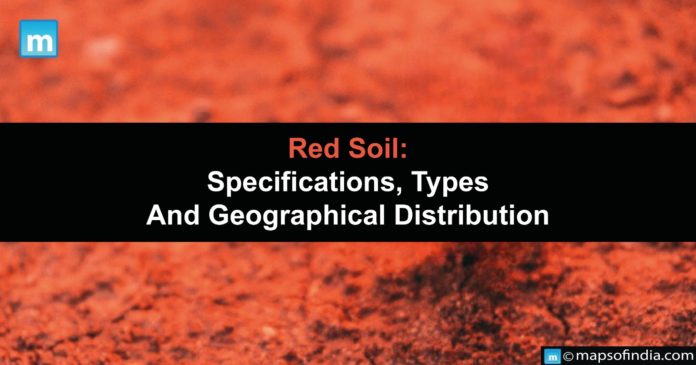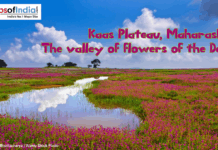Red soil is a type of soil that is characterized by its reddish colour due to the presence of iron oxide. It is one of India’s most common soil types and is found in various parts of the country. The article discusses the features and geographical distribution of red soil in India.
Features of Red Soil
-
Colour
Red soil gets its name from its reddish colour due to the presence of iron oxide in the soil. The soil may also have other colours, such as yellow or brown, depending on the proportion of iron oxide and other minerals.
-
Texture
Red soil has a sandy texture and is well-drained, making it suitable for crops that do not require a lot of water. However, the soil may also have a clayey texture in some areas, which can cause waterlogging and reduce crop productivity.
-
Fertility
Red soil is generally poor in fertility due to its low nutrient content. However, adding organic matter, fertilizers, and other soil amendments can make it more fertile.
-
Acidity
Red soil is generally acidic, with a pH range of 4.5 to 6.5. This can affect the growth of crops that prefer a more neutral pH and lead to nutrient deficiencies.
Geographical Distribution of Red Soil in India
Red soil is found in various parts of India, with the largest distribution in the Deccan Plateau region. Some of the major areas where red soil is found in India are:
-
Eastern and Southern India
The eastern and southern regions of India, including Odisha, Chhattisgarh, Andhra Pradesh, Telangana, Karnataka, Tamil Nadu, and Kerala, have a significant presence of red soil. The soil in these areas is well-suited for crops such as cotton, groundnut, and tobacco.
-
Central India
The central region of India, including Madhya Pradesh and parts of Maharashtra, has a large distribution of red soil. The soil in these areas is suitable for soybean, wheat, and cotton crops.
-
Northeast India
The northeastern region of India, including parts of Assam and Meghalaya, has a presence of red soil. The soil in these areas is suitable for crops such as tea and rice.
Types of Red Soil
There are several types of red soils in India, each with its unique characteristics and properties. Some of the major types of red soils found in India are:
-
Lateritic Red Soil
Lateritic red soils are formed in areas with high temperatures and heavy rainfall. They have a high iron content and are generally acidic. Lateritic red soils are found in India’s southern, eastern, and northeastern regions.
-
Alluvial Red Soil
Alluvial red soils are formed from depositing red soil sediments in river valleys. They are typically rich in minerals and are well-suited for agriculture. Alluvial red soils are found in India’s northern, eastern, and southern regions.
-
Volcanic Red Soil
Volcanic red soils are formed from volcanic ash and lava and are typically found in areas with volcanic activity. They are rich in minerals and are well-suited for crops such as tea and coffee. Volcanic red soils are found in the western and southern regions of India.




